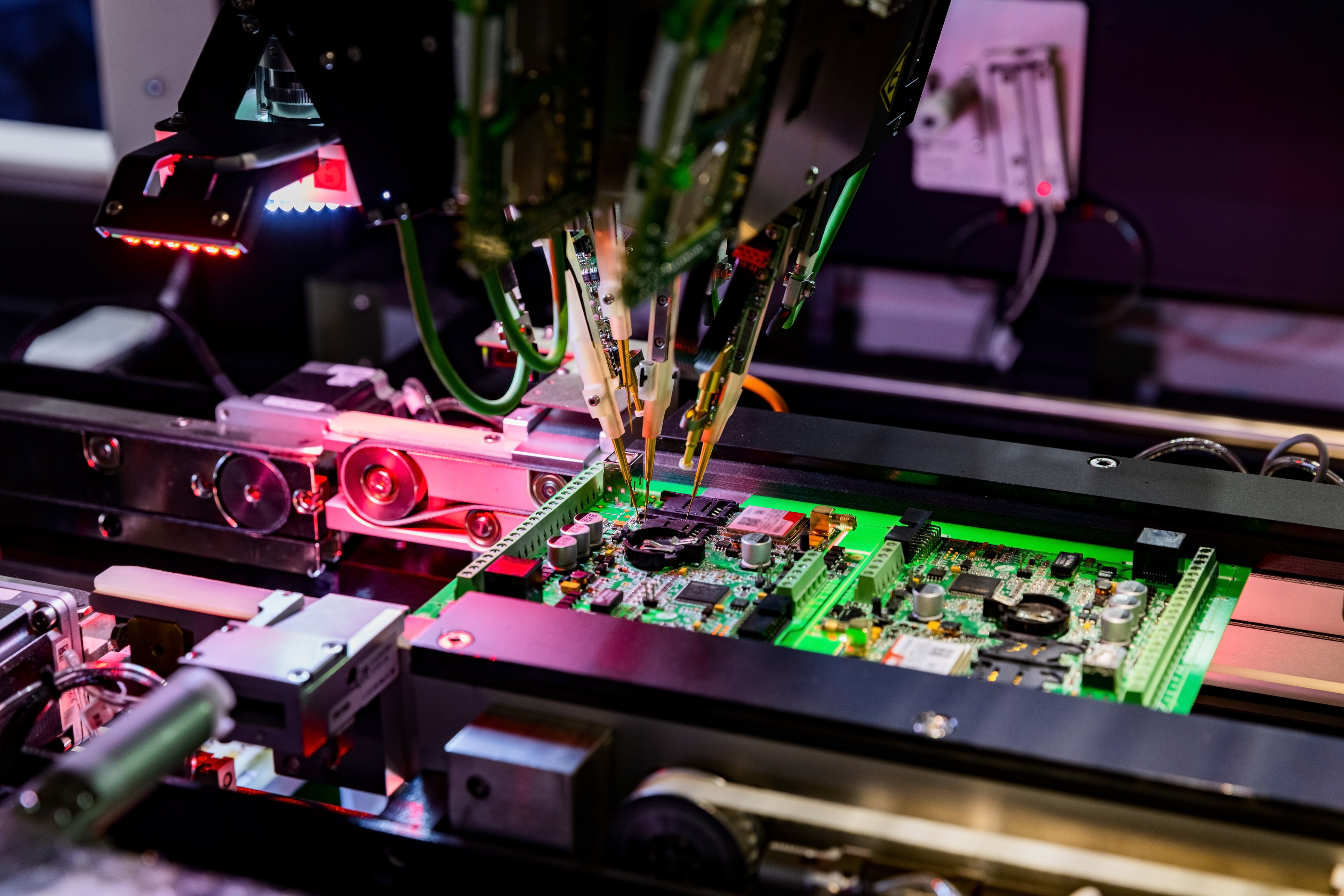The Semiconductor Industry Association (SIA) is promoting the Creating Helpful Incentives to Produce Semiconductors (CHIPS) for America Act, introduced in Congress in June 2020. An SIA press release describes the bill as “bipartisan legislation that would invest tens of billions of dollars in semiconductor manufacturing incentives and research initiatives over the next 5-10 years to strengthen and sustain American leadership in chip technology, which is essential to our country’s economy and national security.”
On June 8, 2021, the Senate approved $52 billion for the CHIPS for America Act, dedicated to supporting the U.S. semiconductor industry over the next decade. As of this writing, the Act awaits approval in the House of Representatives. Our INET working paper “Why the CHIPS Are Down,” documents in some detail a curious paradox: Most of the SIA corporate members now lobbying for the CHIPS for America Act have squandered past support that the U.S. semiconductor industry has received from the U.S. government for decades by using their corporate cash to do buybacks to boost their own companies’ stock prices. Among the SIA corporate signatories of a letter to President Biden in February 2021, the five largest stock repurchasers—Intel, IBM, Qualcomm, Texas Instruments, and Broadcom—did a combined $249 billion in buybacks over the decade 2011-2020, equal to 71 percent of their profits and almost five times the subsidies over the next decade for which the SIA is lobbying.
In addition, among the members of the Semiconductors in America Coalition (SIAC), formed specifically in May 2021 to lobby Congress for the passage of the CHIPS for America Act, are Apple, Microsoft, Cisco, and Google. These four firms spent a combined $633 billion on buybacks during 2011-2020. That is about 12 times the government subsidies provided under the CHIPS for America Act to support semiconductor fabrication in the United States in the upcoming decade. Do these companies need $52 billion in subsidies from U.S. taxpayers to give them incentives to invest in semiconductor fabs?
The main purpose of these hundreds of billions of dollars in buybacks has been to give boosts to the stock prices of the repurchasing companies. As a result of buybacks, a company’s stock price increases a) if, as is typically the case, stock traders bid up the price when a company announces a repurchase program giving the CEO and CFO the authority (but not the obligation) to do a certain value of open-market repurchases (say, $10 billion) over a certain time period (say, three years); b) when, at the direction of the CFO, the actual execution of buybacks by the company’s broker on any particular day or series of days increases the market demand for the company’s shares; and c) if, with the release of the company’s quarterly financial report, the increase in the company’s earnings per share (EPS) because of the reduction in shares outstanding prompts stock traders to bid up the price of the company’s stock even more.
From October 2012 through June 2021, Apple alone spent an astounding $444 billion on buybacks, equal to 87 percent of its net income. That is in addition to another $114 billion paid out as dividends, representing an additional 22 percent of net income, over these eight and three-quarter years. With just a fraction of those funds wasted on buybacks, Apple could have invested directly in a state-of-the-art fab to produce its own chips on U.S. soil.
Back in August 2010, electronics journalist Mark LaPedus published a column, addressed to Apple CEO Steve Jobs, entitled “Apple should build a fab.” At the time, Apple was reliant for chip fabrication on its emerging smartphone competitor, Samsung Electronics. LaPedus recognized that “in an age when real men go fabless, I concede it’s an unconventional idea. You might think it’s absurd. But an Apple A4 fab today could keep the iProduct franchise in hay—and Samsung at bay.”
In August 2011, two months before he passed away, Jobs had handed over the CEO position to Tim Cook, the Apple executive who had added value to the company by outsourcing manufacturing of devices to Hon Hai, enabling the Taiwanese company’s Foxconn subsidiary in China to emerge as the world’s leading electronics manufacturing services provider. Under Cook, Apple shifted its chip-fabrication contract from Samsung to Taiwan Semiconductor Manufacturing Company (TSMC), the pioneer in the “pure play” foundry model, which, largely because of Apple’s contract, is now the world leader.
This past April, TSMC announced plans to invest $100 billion in fabs over the next three years, including a $12-billion 5nm facility in Arizona to fabricate Apple’s M-series processors. In potentially providing $52 billion of taxpayers’ money to support the U.S. semiconductor industry under the CHIPS for America Act, federal lawmakers might contemplate the fact that TSMC’s multiyear investment of $12 billion in a state-of-the-art fab in Arizona pales in comparison to the vast sums that Apple has been routinely spending on buybacks: $73 billion in 2018, $69 billion in 2019, $72 billion in 2020, and $66 billion in the first nine months of 2021. A country, never mind one enormously rich company, could have built a lot of state-of-the-art fabs with all that cash.
As a key part of its trade war with China, one year ago the Trump Administration coerced TSMC to cease manufacturing chips for Huawei Technologies, which had emerged the previous year as the world’s leading smartphone company, ahead of Samsung and Apple. In 2019, Apple had accounted for 24 percent of TSMC’s revenues and Hi-Silicon, Huawei’s wholly-owned chip-design subsidiary, 15 percent. In the third quarter of 2020, TSMC began shipping smartphone chips to the Chinese company produced on the fabricator’s 5nm technology. In that same quarter, 59 percent of TSMC’s revenues came from North America, followed by 22 percent from China. In the fourth quarter of 2020, revenues from North America soared to 73 percent of TSMC’s total, while those from China plummeted to six percent, as TSMC complied with U.S. government directives to cut off Huawei’s chip supply.
At the same time, 5nm wafer revenue, predominantly from the fabrication of the most advanced smartphone processors, which had been zero percent of TSMC’s total in 2Q20 and eight percent in 3Q20, jumped to 20 percent in 4Q20. In supporting TSMC’s revenues and profits by increasing its purchase of 5nm chips, Apple in effect partnered with the U.S. government to demolish the smartphone business of Huawei, its prime global competitor.
The key weapon that the U.S. government used to force TSMC to cut off Huawei was the credible threat that leading U.S. semiconductor equipment companies—most notably Applied Materials, Lam Research, and KLA—would otherwise withhold sales of their critical products to the Taiwanese foundry. These three companies, which rank #1, #3, and #5 respectively in the global chip-equipment industry, grew immensely in the 1990s, with support from Sematech, a non-profit consortium of 14 leading U.S. semiconductor companies that received $500 million from the U.S. government between 1989 and 1996 in response to Japanese competition in the machinery segment of the industry.
During the 1990s and into the 2000s, Applied Materials, Lam Research, and KLA became innovative world leaders by retaining all their profits and reinvesting in productive capabilities. From the mid-2000s, however, they all caught the American financialization disease. Over the decade 2011-2020, the three companies combined did $30 billion in buybacks, equal to 76 percent of their profits, while also distributing 35 percent of profits as dividends. Our research suggests that if these companies remain focused on using their profits to prop up their stock prices, innovative equipment suppliers, most likely based outside the United States, will take over the segment’s top spots in the next decade or two.
In providing the U.S. semiconductor industry with $52 billion in subsidies under the CHIPS for America Act, Congress could require the SIA and SIAC to extract pledges from its member corporations that they will cease doing stock buybacks as open-market repurchases over the next ten years. President Biden should be open to this idea. Exactly five years ago, as vice president in the Obama administration, he published an op-ed in the Wall Street Journal that was highly critical of buybacks, stating that “government should…take a look at regulations that promote share buybacks, tax laws that discourage long-term investment and corporate reporting standards that fail to account for long-run growth. The future of the economy depends on it.” A moratorium on buybacks by U.S. tech companies could also be a first step in rescinding Securities and Exchange Commission Rule 10b-18, which has since 1982 been a major cause of extreme income inequality and loss of global industrial competitiveness in the United States.








